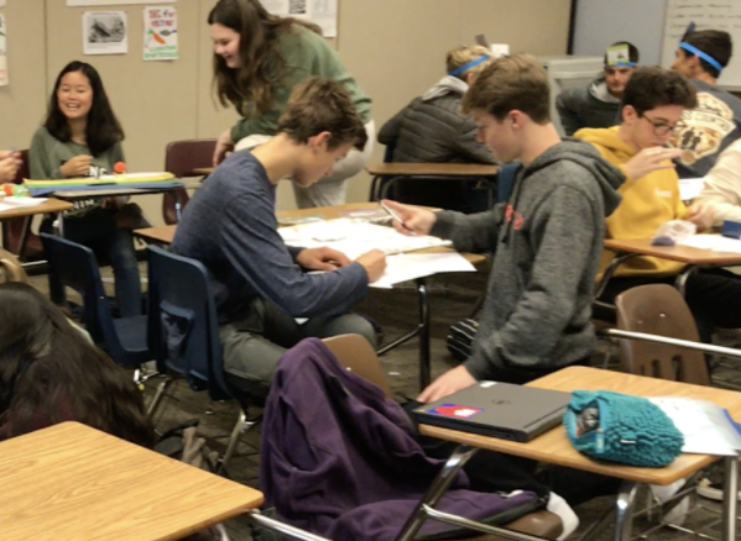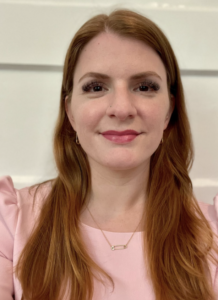
Why I Practiced Public Learning with Students
With the start of a virtual school year looming, I spent the summer of 2020 grappling with the idea of teaching my incoming freshmen history students in a Zoom setting. I always strive to create a comfortable, welcoming and culturally responsive environment. But I wondered, would it be possible to foster such a setting in a Zoom format?
With that question in mind, I decided to implement a few new teaching practices during distance learning. First, I began every class with a check-in question. These questions ranged from silly to serious and students could answer publicly or privately via chat.
- Would you rather be a reverse centaur or a reverse mermaid?
- What is your least favorite ice cream flavor?
- Who is someone you admire in your life?
Through these questions I noticed a few things. First, people are quite passionate about ice cream flavors. Second and more importantly, as the weeks went on I saw students shift from privately sharing their responses to publicly posting what they thought and commenting on what others had said. Our space on Zoom was beginning to take the shape of a more traditional classroom, at least in terms of the conversations students were having.
In order to continue to foster a positive classroom community, and on the suggestion of a Lead by Learning colleague, I introduced frequent Google Form surveys. In these surveys, I would ask students for feedback on our class. Some of the questions I included were:
- What was working well in class?
- What would you like to tweak about our class?
- Do you feel like part of our school’s community?
And by December 2020, I was seeing success. Class participation was reaching levels of 85-90% over Zoom.
But then in March, we transitioned to a hybrid model of learning and participation levels dropped significantly. Some of my most talkative Zoom students were silent when in-person. I realized that the community we had built on Zoom did not naturally translate to our physical classroom. I looked at this new data and I decided to take a risk: practice Public Learning with my students.
I found the practice of Public Learning with my Lead by Learning colleagues to be an impactful experience for my learning, which made me wonder: How would Public Learning be received by my students? I was also quite nervous to be a public learner with students. I always strived to be polished and prepared when teaching and Public Learning in front of students required me to be vulnerable in a new way.
Pushing through that discomfort, however, I created a plan of action. I sent another survey to my students asking them to share about the transition to hybrid learning. Then as a public learner, I shared this student data with my class.
Students loved seeing behind the curtain, so-to-speak. They were excited to see what their classmates had to say about the course and they enjoyed feeling a sense of empowerment and agency over the design of their learning. Sharing this data also demonstrated to my students that their voices were truly being heard. One student remarked that seeing the survey results made them feel that I “…actually care about what we [students] think and see us as real people.” This statement felt profound. I have always cared about my students and seen them as “real people,” but to realize that students do not always assume their teachers have this mindset was humbling. In addition to that realization, the impact of this Public Learning conversation with my students was immediate.
- Daily student participation returned to near-Zoom levels of 85%.
- Students became more comfortable within the classroom because they felt like they shared a partnership with me in structuring the course.
- Students began emailing me with suggestions for our beginning of the class check-in questions.
All of these data points indicated to me that students were taking ownership of the course and their learning. In other words, they had ideas about what we could discuss in class and felt comfortable sharing them with me.
Back in the summer of 2020, I would not have thought to abandon my polished veneer and practice Public Learning with my students. And, I am so glad that I did. I realized that Public Learning with students is culturally responsive. My earlier fears of Public Learning were misguided. Being vulnerable with my students did not lessen my authority, instead it cemented my role as the leader and opened the door for my students to become active stakeholders in the class. I have always thought of culturally responsive teaching as a way to connect students’ languages, cultures and lived experiences to what they learn in school. Through this experience, though, I’ve realized that culturally responsive teaching is so much more and should also help students see their ideas and feedback within the structure of the class. This realization impacts my teaching every day and will continue to do so in the future.
 Arielle Lehmann is a fifth year history teacher at Tamalpais High School in Mill Valley. She has her masters degree in Public History from UC Riverside and her teaching credential from Sonoma State University. When not in the classroom she enjoys hiking, visiting museums and art galleries, and finding new boba shops to try out.
Arielle Lehmann is a fifth year history teacher at Tamalpais High School in Mill Valley. She has her masters degree in Public History from UC Riverside and her teaching credential from Sonoma State University. When not in the classroom she enjoys hiking, visiting museums and art galleries, and finding new boba shops to try out.
